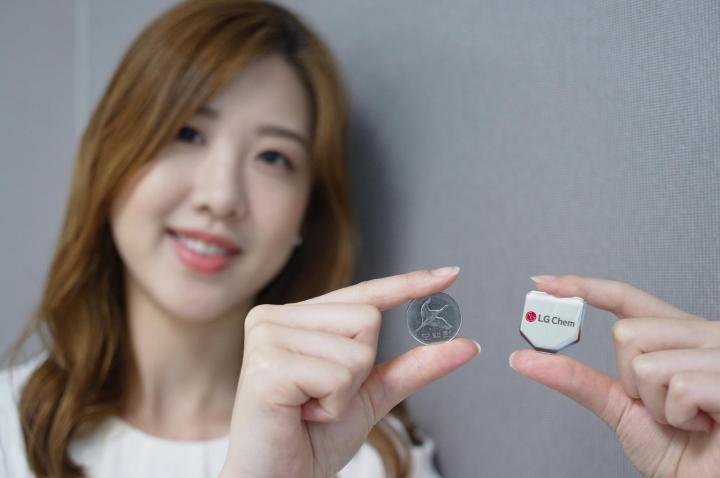
The hexagonal batteries are an intuitive approach to the problem of efficiency. The batteries in current-generation smartwatches are the shrunken-down, misshapen equivalents of the rectangular ones found in smartphones, tablets, and the like. In round watches — such as the LG G Watch Urbane — that leads to a lot of wasted space, as the corners of the watch’s enclosure go unused. By filling that space with more battery, LG says it can increase battery by up to 25 percent, which amounts to about four more hours of battery life.
The hexagonal battery is only one of several unconventionally shaped batteries produced as part of LG’s Free Form Battery program. The company is using a “stack & folding” technique that involves injecting the components of each battery — the electrolyte, anode, separation film, and cathode — layer by layer on top of one another. The process makes it possible to fabricate cells in a variety of weird shapes and sizes. LG is working on an L-shaped battery, a “step battery,” “curve battery,” “wire battery,” and even a donut-shaped battery with a hole in the middle.
Some of those designs sound like pipe dreams, but they’re closer to production than you might assume — in 2013, LG signed on 10 partners to manufacture Free Form batteries.
“One most certain method to lead in the market is making and promoting a new market that doesn’t exist in the world,” President Kwon Young Soo of LG Chem’s Battery Business Department told ETNews. “We are going to take the top position in the small-battery field in 2018.”
The hexagonal batteries, which are scheduled to go into production later this year, aren’t user-installable. If you’re a current-generation Apple Watch or Android Wear device owner, your only recourse is an aftermarket battery like the Wipowerband or an extra watch charger. That, some might posit, is the price of early adoption.

